Tips for Planting Bulbs
September 22, 2025
Bulbs in Bulk- When purchasing bulbs in bulk, check the quality to make sure the bulbs are firm and not moldy or squishy.
Full Sun- For hyacinths, choose a site that gets full sun, though most daffodils can tolerate part shade.
Good Soil- Make sure soil is rich in organic matter and well drained because bulbs are highly susceptible to rot.
Make Them Pop- Give bulbs a dark green backdrop, such as an evergreen hedge, for making their colors pop.
Plant in Masses- Plant bulbs en masse, not in small clusters, to create the biggest impact.
Sweeps of Color- Plant in sweeping drifts of color, not in uniform rows, for a bigger visual punch.
New Heights- Consider hillsides for taking advantage of varying heights of flowers, making a planting bed seem larger.
Color Block- For the boldest effect, plant in masses of one color -- and one that complements adjacent plantings of spring annuals or blooming shrubs and trees.
Planting Bulbs- Save time – and your back – by placing bulbs, tip end up, on top of the planting bed, then cover them with a layer of several inches of soil, instead of digging individual holes for bulbs. Don’t worry if the bulbs tip over; they will work themselves upright.
Extend Growth- Extend the bulb bloom season by combining varieties that bloom early, mid- and late spring.
Contrasting Colors- Under plant beds of annuals, such as pansies or violas, with bulbs to create a complementary-color foil and extend the bloom season.
Mix Flowers- Combine container gardens of fall and winter annuals with bulbs for surprise additions next spring.
Avoid Mulch- Don’t mulch over bulb plantings because that layer of insulation withholds extra moisture in the soil and could cause bulbs to rot.

HAPPY NEW {2026} YEAR! Brighten up the inside with houseplants! Beautiful selections in various shades of green and even colorful plants, like Cordyline, add some much needed winter color into your interior space while CLEANING THE AIR! Come check out our stocked greenhouse for the perfect purifier! Already have houseplants? Turn them halfway, so they don't grow too much toward the light. Click here to read about Gardening Trends for 2026! Click here to gain some ideas on your 2026 Gardening Resolutions! JANUARY TO DO LIST: -Dormant plants are ready to set in the ground, so it's time to plant things like roses, fruit trees and berries. -You can still plant cool season annuals, like the bright-colored pansies, to give all the color you need for winter. -Sow wildflower seeds, especially spring bloomers. Scatter now for a springtime bouquet. -Protect plants from frost by grouping the ones in containers close together on a porch or patio, or move them inside if possible. Cover tender plants that are rooted in the ground. -Turn off irrigation systems for mature landscapes, if not done already. Freshly planted landscapes, should be getting reduced water also, and will probably only need irrigation every 7-14 days, IF adequate precipitation is not received. January is typically rainy enough that no additional irrigation is required. -An exception to the no watering rule is directly before a hard freeze. Any freshly-planted transplant or cold-sensitive plant will be much more prone to freeze damage if it is dry to the point of wilting. It’s always a good idea to give the garden a light watering before sub-freezing temperatures are expected, especially if the weather has been dry. -Remove dead and damaged branches first on roses, then prune the canes back by 1/3 at a 45 degree angle, making cuts just above an outward facing bud. This can be done from now through Valentine's Day! -Remove old flowers from your cool-season bedding plants to extend blooming, and improve flower showing. -Prune summer flowering shrubs such as crape myrtles, althea and oleander. -Smother over-wintering pests by spraying with a dormant oil. Check the undersides of leaves on evergreen plants such as camellia, holly, and magnolia, and spray accordingly.
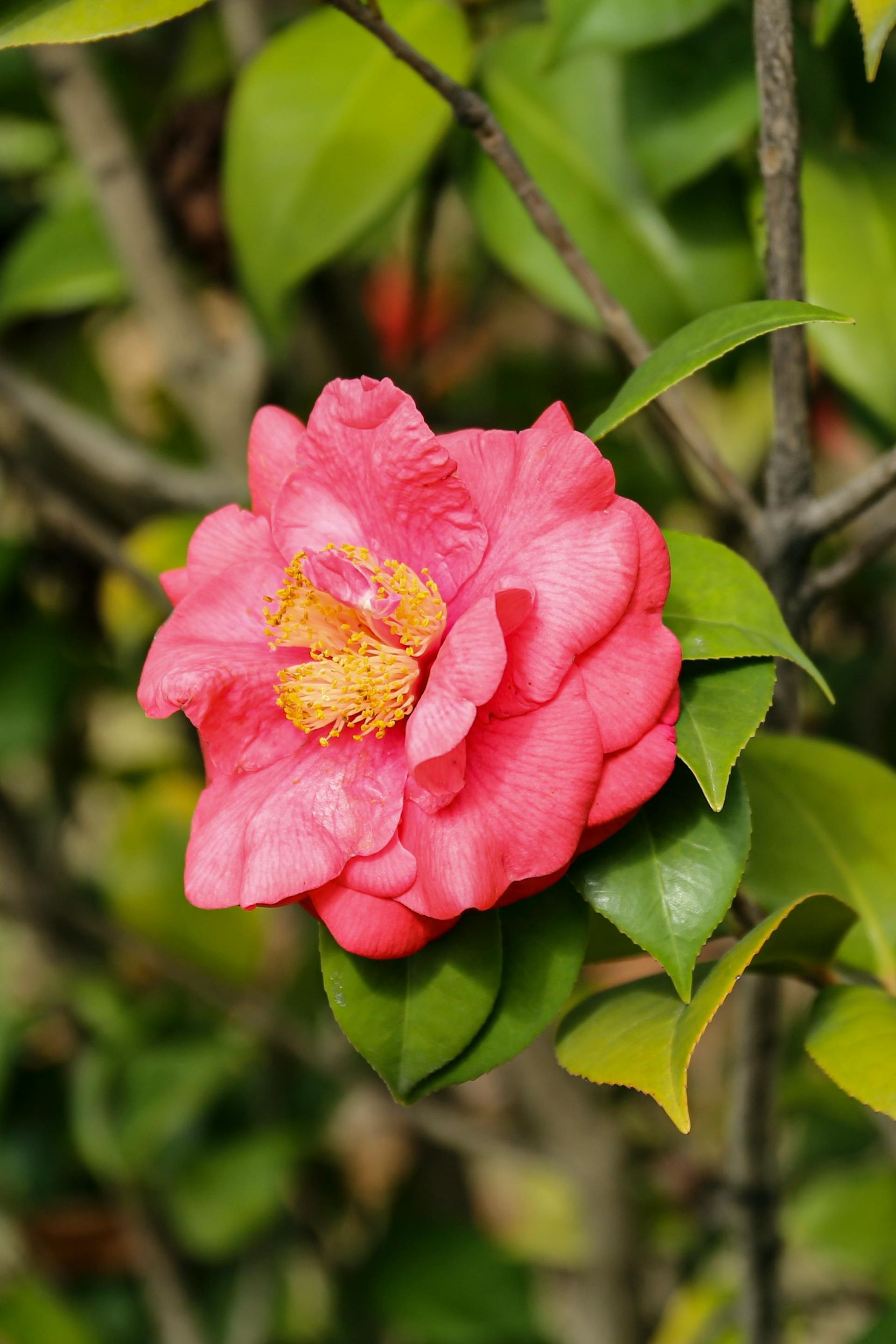
If you’ve noticed the sudden explosion of beautiful rose-pink flowers dotting the landscapes these past few weeks, you have witnessed one of the top-performing shrubs for Louisiana landscapes: ShiShi Gashira. This plant is often listed as Camellia sasanqua in the trade, but it is actually part of the Camellia hiemalis species. Named a Louisiana Super Plant in the fall of 2010, ShiShi Gashira has long been an outstanding shrub for the landscape, and its history goes back hundreds of years. According to the American Camellia Society, ShiShi Gashira originated in Ikeda City, Japan, where it was first mentioned in recorded history in 1894. It was featured in a nursery catalog as early as 1935. This shrub has been around for a long time, and its reliable beauty is why it is such a staple in the landscape. This evergreen, dwarf shrub has a profusion of rose-pink, semi-double blooms with golden-yellow centers on stems with dark green, glossy foliage in late fall through early winter. ShiShi Gashira makes an excellent selection as a foundation planting around houses because of its gorgeous green foliage that remains year-round. The winter bloom time brings beautiful color to the landscape as many of our other landscape plants are going dormant. ShiShi Gashira camellia shrubs can be grown as a focal piece of the landscape, planted en masse to create a stunning splash of color or grown closely together to create a colorful low hedge. They have a unique weeping form that can be used to create a beautiful backdrop or winter woodland garden setting. ShiShi Gashira grows at a moderate pace, reaching a mature size of 4 to 5 feet tall and 6 to 8 feet wide. Older plantings — such as the specimens at the J.C. Miller horticulture building on the LSU campus — can reach heights of 6 or more feet. In general, camellias are a slow-growing shrub best suited for USDA hardiness zones 7 to 10. Unlike the traditional camellias from the Camellia japonica species that require filtered sun, ShiShi Gashiras grow well in full sun. Camellias prefer well-drained, acidic soils with a pH between 5.0 and 6.0. They pair well with companion plants that also prefer more acidic soils such as azaleas, Japanese maples, lily of the valley (pieris), rhododendrons and hydrangeas. You’ll often find camellias as an understory to pine trees, which thrive in acidic soils. In south Louisiana, alkaline soils can cause problems. In north Louisiana, flower buds are often damaged by colder temperatures. It is important to maintain a 2-to-3-inch layer of mulch year-round to prevent weeds, provide organic matter, help retain moisture and protected roots from intense summer heat. Water regularly when the top 3 inches of soil is dry. Older, established plants can live off rainfall and are a great deal more tolerant of full sun and drying winds. New plantings should be watered regularly, and one should consider installing irrigation. Younger plants are less tolerant of sun and winds. Fertilize with an azalea-camellia fertilizer or a complete fertilizer such as 13-13-13 in late winter before new growth begins. Camellias, like most flowering shrubs, should be pruned immediately after they have finished blooming. This allows the shrub time to form new growth and flower buds before the next cycle of bloom. Pruning does not have to be done annually, just as needed. While camellias don’t have any major disease problems, tea scale is a common insect pest of flowering camellias. Scales are small insects that attach themselves to the leaves, mainly at the midrib of the leaf, and extract plant juices. In the spring, the next generation of scales hatch from their eggs. Known as crawlers, these young scales eventually attach themselves to the undersides of leaves. Adult scales are very resistant to insecticides. Treat early in the crawler stage. Apply insecticides so that they cover the bottom surface of the leaves. Repeat treatments may be needed with heavy infestations. Light to moderate infestations can be treated with oil sprays when temperatures are cool so as not to burn the plants. It may take two to three years to bring heavy infestation under control. Every landscape should feature a camellia of some sort (in my humble opinion). There is no limit to the opportunities, with more than 200 species and 20,000 varieties of camellias available. Camellia flowers come in all sorts of colors from white, red, pink and variegated varieties with several different flower forms. Individual blooms are relatively large — up to 5 inches across — and come in many forms: single, semi-double, formal double, peony, anemone and rose forms. The blooming opportunities seem endless, and they are a wonderful cut flower to be enjoyed indoors and shared with loved ones. View ShiShi Camellia Here! Article by LSU Ag Center. Visit online here.
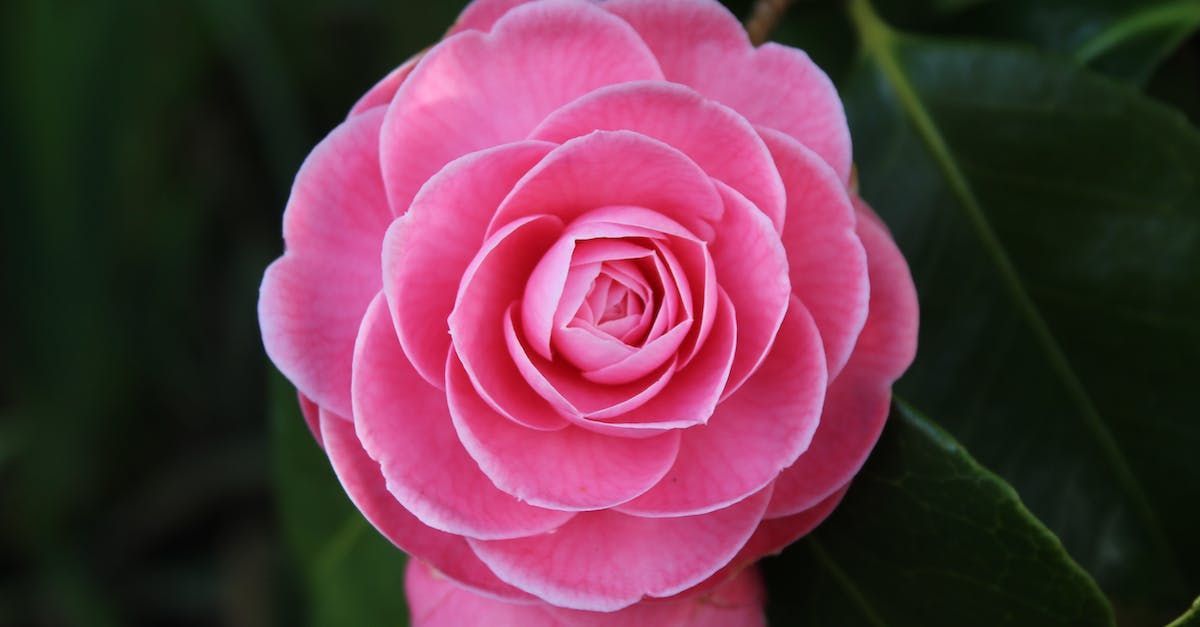
Turn to these sensational flowers and plants for winter interest. Cabbages and Kales Ornamental kale and cabbage are some of the most popular winter annual plants. They lend a completely different texture to a winter landscape bed. Once the plants are hardened by cooler night temperatures they can survive most cold winters. Camellias Camellias prefer acidic, moist yet well-drained soil that is high in organic matter. They flower in the fall, winter or early spring when their display of colorful blooms is most appreciated. The waxy-petalled flowers linger long on plants, displaying shades of red, pink, coral, white and bicolors. Plants are evergreen, growing to form shrubs or small trees. Once established, camellias are drought-tolerant. Holly Bush Hollies bring an eye-catching display of evergreen leaves that is often punctuated with bright red or gold berries. Japanese Maples Japanese maples often have artistically shaped trunks. The contorted branches on this shrub or small tree come into focus as winter arrives. Nandina Nandina shows off its berries in our usual milder winters. Tuck these plants in front of solid backdrops so the berries can shine. Pansy These are our winter’s favorite and festive annual. Showing off in all colors, these open-faced flowers are ready for cold weather. They look just as good planted in one color as they do mixed with many colors. Add in Blood Meal for a lasting bloom fertilizer. Cyclamen Ideal for a shady area that needs cool-season color, Cyclamen bloom in white, red, pink, purple and some with two-tones. Their leaves are just as striking with silver markings that can be stand-alone interest when the plant isn’t blooming. Petunia Petunias have bright blooms we are all familiar with, and they are annuals that thrive in night temps between 55-65 degrees F and day temps between 61-80 degrees F. While they are beautiful for our “normal” mild winter temperatures, they will succumb to temperatures below 40 degrees F so will need to be protected in the event of a freeze. Lemon Ball Sedum This lime-green trailing succulent-like favorite is a pop of color for containers in winter. It does well in our springs and summers, and tolerates the cold just fine until temperatures dip freezing. Many people plant these in containers that can be easily covered or brought into a warmer space should a freeze take place. Chinese Fringe/Loropetalum These shrubs can be in dwarf or full size for a pop of purple in your landscape all winter. Enjoy the evergreen color foliage, an eggplant shade of purple, which mixes in well with the shades of greens your landscape populates. From mid-March through mid-April, fun fringe-like bright pink blooms appear! Magnolia Tree Why not plant Louisiana’s state flower to enjoy its evergreen and stately foliage and form, as well as those iconic blooms? These charming trees pair nicely next to the homes built in our Acadiana area, and the blooms can be used in your table arrangements as cut flowers. There is a smaller variety than the “BIG GUY” we see in parks: the Little Gem. These only reach a fraction of the size and are not a threat to your slab by being planted in landscape beds. They mature to 15-20’ tall by 7-10’ wide, and take their time reaching that by growing about a foot per year. Please note- All Seasons may or may not have these plants in stock available to purchase at the time you come to purchase these. If you're ever looking for something specific, please call the garden center at 337.264.1418 or send an email question via this link prior to your shopping visit!

When we think of resolutions for 2026, we immediately think of losing weight, being more organized; or quitting smoking. Why not make a resolution for better gardening/better garden planning, attract pollinators, grow for cut flowers in your home, grow to eat or cook with herbs, record keeping, getting the kids to plant and care for edibles or flowers, etc.? You could even resolve to have a completely new outdoor look for your new year! All Seasons customizes landscaping and outdoor living like no one else in Acadiana. If you resolve for a pool, patio, outdoor kitchen, new plants, or anything- we can help you reach your 2026 goal! Here are some ideas to get the ground broken: 1. Resolve to not blame yourself for gardening failures last year. Try again and learn from experience! Call on us to help ensure your success! 2. Resolve not to be afraid to ask questions. How else can you learn? Take advantage of us being here for you; we're happy to help you through to gardening success. 3. Resolve to try new plants. Try a new growing style or a completely new crop of vegetable. Garden out of your comfort zone! We always stock interesting plants year-round to keep you garden interesting (or edible!) When the weather is too cold to venture outside, plan your garden from your sofa. Search our online database of plants here via our Plant Finder tool, and email us your list . Here is a link to the Plant Finder. 4. Resolve to share your passion for gardening and landscaping. Be a mentor for someone else. Wouldn't it be amazing to be the reason your neighbor plants a window box for the first time? Perhaps you could even become a Louisiana Master Gardener! 5. Resolve to try a new trend. Here is a list to some of this year’s gardening trends. You can try interior plants or plant things with bold foliage. 6. Resolve to embrace nature and garden for the birds, bees, butterflies. Plan flowers and vegetables with them in mind, sit back and enjoy the show! 7. Resolve to invest in nice pottery pieces, and change out plants seasonally for a fresh new look all year. 8. Resolve to ENJOY your garden. Take a stroll each morning or evening, cut flowers and stick them in a vase to bring indoors. Take photos to print and hang around the house. Host your children’s or grandchildren’s birthday party or graduation. 9. Resolve to spend more time outside. Relax on a nice bench, or hang a swing or hammock. Create a shady area to be comfortable in summertime by planting a shade tree or building a small pergola. 10. Resolve to finally put in that swimming pool, outdoor kitchen, and/or landscaping you've always wanted. We offer FREE consultations to design your new backyard that will melt your stress in 2026. Contact our Landscaping Services Department this New Year!
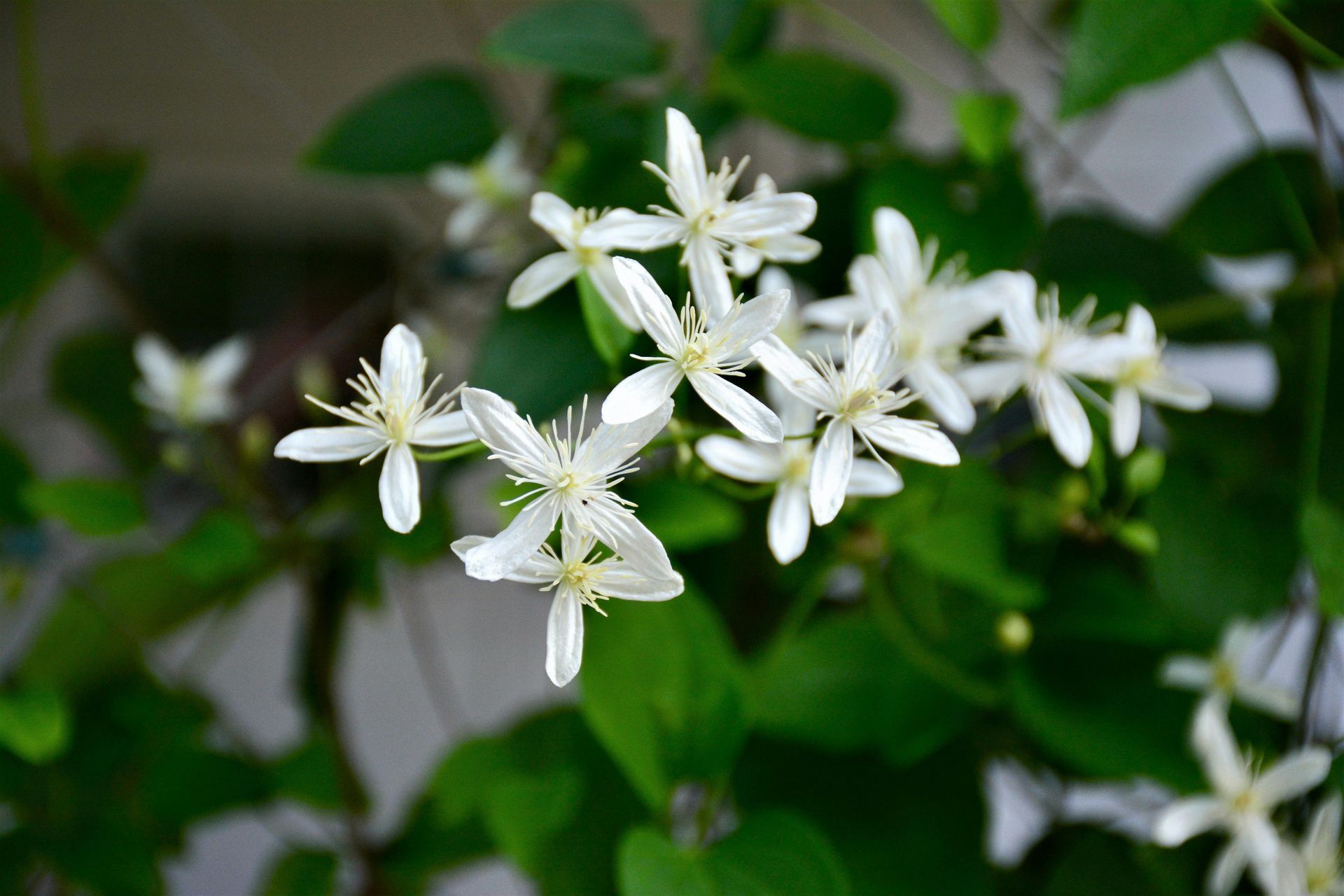
Gardening has always been a popular pastime, and a healthy habit for many. The trend has continued to “grow” year after year, and this New Year we anticipate more people to DIG IT! Plant Cool Tones like the Pantone Color of the Year: Cloud Dancer This year’s color of the year is a soft white, which was chosen for its “calming, serene qualities as a ‘blank canvas’ for quiet reflection in a noisy world.” The Pantone article also states that the “natural hue signifies peace, simplicity, and a return to fundamental comfort.” Plants have a similar effect on us. They bring us peace and a sense of that back to nature feel without the noise and chaos of a busy world around us. Plant flowers with a white bloom to bring you the feeling of calm to your landscape/containers. Interior Plants to Clean the Air Interior plants benefit your indoor air quality, including purifying the air, as well as boost your mood. Gone are the trends for artificial dust-covered ferns on the bathroom windowsill, and in are English Ivy, which is an air purifier plant and ideal for the germs covered on bathroom counters. Growing Up Climbing plants for arbors, fences, pavilions, walls, even mailboxes, adds a whimsical essence to an outdoor space- especially if you enjoy hosting outdoor events. There are many plants that make excellent specimens for a vertical garden- such as confederate jasmine, which has a sweet fragrance; clematis, Peggy Martin rose, blackberries, and more! Growing Food in your Kitchen Kitchen counters are being decluttered of appliances and replaced with containers of herbs, lettuce bowls and any other greens we home chefs like to add in meals. Even in kitchens lacking adequate sunlight, a grow light can easily give your select flavorful plants the right nutrients they need to thrive. Vitamin rich micro greens and medicinal herbs are being grown with ease. Just plant, pick and add to your plate! Drought-Tolerate Plants While cacti and succulents are trendy additions to a low-water garden, the options don’t stop there! If you want to plant some things that can take time without water, there are other selections with lush, leafy foliage and vibrant blooms, such as: black eye Susan, lantana, some grasses, lavender, purslane, yarrow and more! Golden Tones Gold is the new black. Gold or yellow foliage in plants are gaining popularity. For outdoors, the Sunshine Ligustrum keeps trending for those who enjoy a bold yellow evergreen foliage alongside the traditional greens. Rising sun redbud has yellow leaves which change to shades of orange in fall that is simply stunning in a front or backyard. For indoors, Neon Pothos and other gold-tone plants brighten up the otherwise dim spaces inside your home. Planting an Evergreen Fence Line Planting tall and bushy evergreen shrubs like Sweet Viburnum, Sweet Olive and Little Gem Magnolias give a boundary easier on the eyes then fence boards, which bring your mind at ease in nature. Many people put up a fence and plant their natural border along the fence to give the look while still keeping the puppy contained! Pollinator & Wildlife Friendly Gardens Planting a space dedicated to attracting butterflies, bees and birds have been on many people’s “To Do List.” We always have customers wanting to know what attracts pollinators. The added benefit are these plants provide lots of color to an area so you and a feathered friend will enjoy! Also on the rise are the beneficial insect homes for butterflies, lady bugs and bees. With the honey bee reaching the endangered animal list, alternate pollinators are more important than ever. Plant flowers they like to attract them and then offer them a home. Your garden will reward you. Bold Foliage Expect plants with big, bold, and unique foliage to be the talk of conversation this year. This trend owes a lot to the growing popularity of the Monstera deliciosa, “Swiss Cheese Plant” which has eye-catching natural leaf holes that make your house guests always ask what it is. This year, the likes of banana plants, birds of paradise and other bold-leaf statement makers are the next “It Plants.” Low-Maintenance Beauty Everyone stays busy these days, and while we would love to spend endless hours in our garden, life’s “must-dos” present a challenge for that. Planting things that will bring you beauty without costing you time is a top trend. We have MANY options of low-maintenance selections, so visit with an associate at the garden center to find your favorites! Native Plants Louisiana has vibrant native plants to offer, and planting them has a built in success rate since they naturally thrive in our unique climate. Consider the purple Louisiana Iris for areas that tend to stay soggy in your yard, or the Henry Garnet Sweetspire to attract butterflies. Growing Edibles in Containers We love the farm-to-table trend, and many gardeners still plant in-ground vegetable beds and have an orchard of citrus and fruit trees. However, a trend we’re seeing is people wanting to know what they can plant that’s edible in a container. Something to know before you grow is the container you are choosing needs to be at least twice the size of the plant you are choosing. There are many options- from lemons to blueberries- and we can share with you all the details when you come into the garden center to DIG IT.
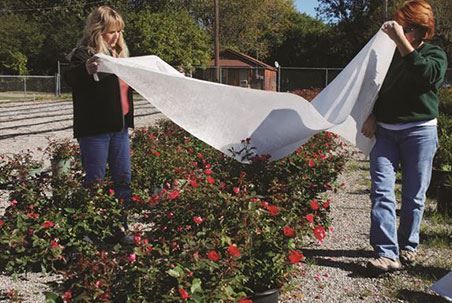
Keep your plants safe from frost by using winter plant covers. These chill-chasing covers give plants a cozy hideaway that’s warmer than surrounding air. The difference is often only a few degrees, but those degrees make a big difference. Protecting plants from freezes isn’t difficult. One of the most common winter plant covers is a frost blanket or floating row cover that you toss over plants before a freeze arrives. Frost blankets work by excluding cold air and creating an insulating air pocket around plants. Heat from soil, which is warmer than air, is trapped beneath the blanket and held near plants. These cold-defeating fabrics are made from a woven polypropylene that’s lightweight and breathable. The material allows sunlight and water to reach plants, but keeps frost out. Most of these winter plant covers are also UV-stabilized. This means the materials won’t break down quickly when exposed to sunlight and can be used for several growing seasons. Frost blankets come in varying thicknesses. Thicker blankets protect plants to a greater degree than thinner ones. Thicker blankets also exclude more light. Thinner frost blankets typically protect plants to 28° F and permit 70 percent of sunlight to reach plants. Thicker blankets protect plants from 24 to 26° F and allow 30 percent of sunlight to reach plants. It’s most economical to purchase frost blanket rolls 20 to 100 feet long, 6 or 12 feet wide. Cut the fabric into custom sizes, and sew pieces together as needed to form larger blankets. Although frost blankets can lie directly on plants, you’ll get the best protection when you create a framework that holds the winter plant covers above plants. Build a temporary or permanent framework using flexible PVC pipes slid over pieces of rebar driven into the ground. Or drape the blanket over short wire garden fencing. Using materials you have on hand is the secret to creating an inexpensive support system. When using a frost blanket, be sure to anchor the edges to exclude all cold air. Hold edges down with landscape pins, bricks, lumber or other available materials. Or bury edges in a shallow trench, anchoring them with soil.
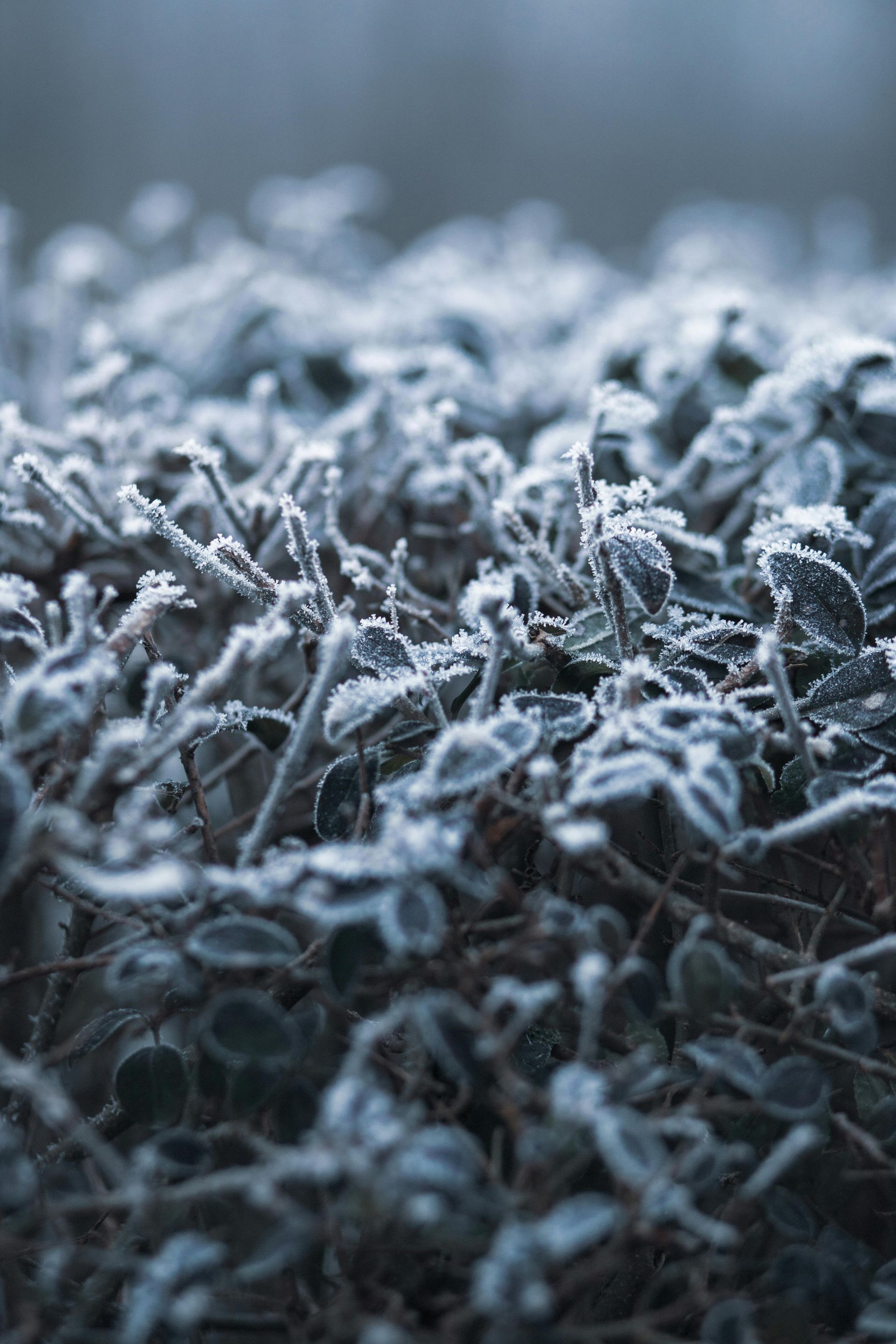
Expected cold weather often brings concern about protecting landscape plants during frosts and freezes. The best approach to protecting plants in winter is to pay attention to the weather forecasts and try to know a couple days ahead of time when a freeze is approaching. When preparing for colder temperatures, it’s important to keep in mind frosts and freezes are different. And weather conditions prior to a freeze or frost play a role in how these temperatures affect plants. If the first cold event is a freeze, landscape plants will suffer more damage. If several cold fronts move through the state and produce several frosts prior to a freeze, we will see less negative impact to plants that normally show damage. To prepare plants for a freeze, thoroughly water them if the soil is dry. This is especially important for container-grown plants. Shrubs in landscape beds also can be helped with irrigation prior to a freeze. It’s best, however, to make sure your shrubs received adequate irrigation or rain throughout fall. Strong, dry winds that frequently accompany cold fronts may cause damage by drying plants out, and watering helps to prevent this. Wetting plant leaves before a freeze does not, however, provide any cold protection. If cold weather is in the forecast, move all tender plants in containers and hanging baskets into buildings where the temperature will stay above freezing. If this is not possible, group container plants in a protected area, like the inside corner of a covered patio, and cover them with plastic. For plants growing in the ground, mulch them with a loose, dry material such as pine straw or leaves. Mulches will only protect what they cover and are best used to protect below-ground parts and crowns. Mulches also may be used to completely cover low-growing plants to a depth of 4 to 6 inches. But don’t leave a complete cover of mulch on for more than three or four days. Larger plants can be protected by creating a simple structure and covering it with fabric or plastic. The structure keeps the cover from touching the foliage, preventing broken branches and improving cold protection. It doesn’t need be anything more elaborate than driving three stakes slightly taller than the plant into the ground. The cover should extend to the ground and be sealed with soil, stones or bricks. Plastic covers should be vented or removed on sunny, warm days. For severe freezes when temperatures dip into the teens, providing a heat source under the covering helps. A safe, easy way to do this is to generously wrap or drape the plant with small outdoor Christmas lights. The lights provide heat but do not get hot enough to burn the plant or cover. Be careful and use only outdoor extension cords and sockets. If necessary, you may prune a large plant to make its size more practical to cover. Keep in mind that your cool-season bedding plants are adapted to the normal cold winter temperatures, so cold protection typically is not needed. Article by LSU Ag Center. Visit online here.
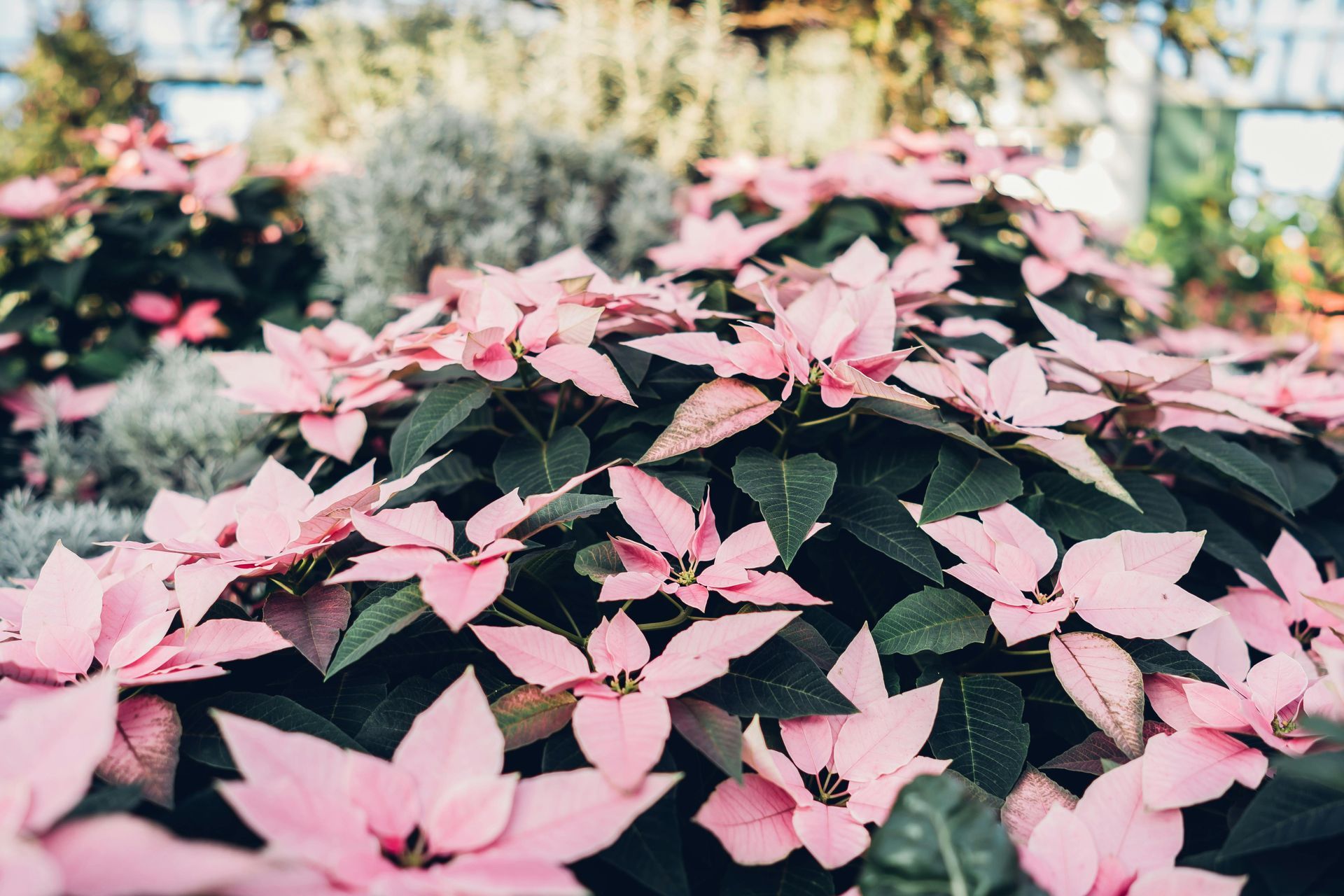
Several of our favorite holiday plants should be kept from children and pets, yet often they pose no serious danger in small amounts. There are many other and more toxic substances to children in homes to be mindful of, especially cosmetics, cleaning products, and personal care products. The poinsettia (Euphorbia pulcherrima), the most popular flowering potted plant for indoors, has gotten a bad rap for a number of years. It’s been falsely accused of being poisonous, yet no deaths from this plant have ever been recorded. In fact, research studies at Ohio State University have proven that poinsettias present no health hazard. The rumors arise from a highly questionable report of a single fatality in Hawaii more than 80 years ago, a child who reportedly died after eating one leaf. However, that doesn’t mean the poinsettia doesn’t have mildly toxic properties. If ingested by pets or humans, it can irritate the mouth and stomach, sometimes resulting in diarrhea or vomiting. The sap may cause a poison ivy-like blistering on contact with the skin on some persons unless washed off immediately. That’s why it’s important to place poinsettias, and other holiday plants, out of the reach of children and curious pets. Keep in mind that pets and people may differ in what plants are toxic, and to what degree. How safe are other holiday plants to humans? Here’s the rundown on some common plants which have toxic properties: Holly (Ilex): Branches are used during the holidays in arrangements for the shiny (but prickly) dark green leaves and berries. Eating the bright, red berries of this plant usually result in no toxicity in small quantities. Large quantities cause nausea, abdominal pain, or vomiting. Mistletoe (Phoradendron serotinum): This plant parasite of deciduous trees in the Southeastern states is used during the holidays for hanging above doorways, and for its white berries. While most exposures result in little or no toxicity, eating large amounts can cause acute stomach and intestinal disorders. These are caused by the chemical phoratoxin, related to ricin (the highly toxic compound from castor bean plants). Yew (Taxus): The leaves, seeds (not the red fleshy covering), bark, and twigs of this evergreen can be toxic from the chemical taxine, causing breathing difficulties, uncontrollable trembling, and vomiting. Most reported poisonings are from the seeds, and only result in mild symptoms. Allergic reactions may occur from nibbling on leaves. Yew is another example of the toxicity difference between people and some animals. It is toxic to people, pets, and livestock, but is devoured by deer. Azalea (Rhododendron): This holiday plant is mainly grown as a shrub outdoors with thousands of variants. The leaves can be toxic. Perhaps the first written account of rhododendron toxicity was from the 4th century in Greece, depicting the poisoning of ten thousand soldiers from a yellow shrub azalea. One study concluded that eating moderate amounts of azalea posed little danger to humans. Pets and children may be more seriously affected, so it should be kept from them. Cyclamen (Cyclamen persicum): Since the thickened roots (rhizomes) of these are the primary toxic part, containing saponins (similar to those in English ivy), it is unlikely humans (including children) would eat such and be affected, and then only if large quantities are ingested. Skin exposure to the plant sap may cause a skin rash in some people. Pets, especially those that like to dig in pots, should be kept away from cyclamen. Amaryllis (Hippeastrum): The toxic part of this plant is the bulb, which contains lycorine and similar alkaloids. These are the compounds found also in daffodils, and the reason wild animals like deer know to leave them alone. House pets may not be so wise, so keep these away from them. Ingestion by humans is unlikely, with small amounts producing few or no symptoms.
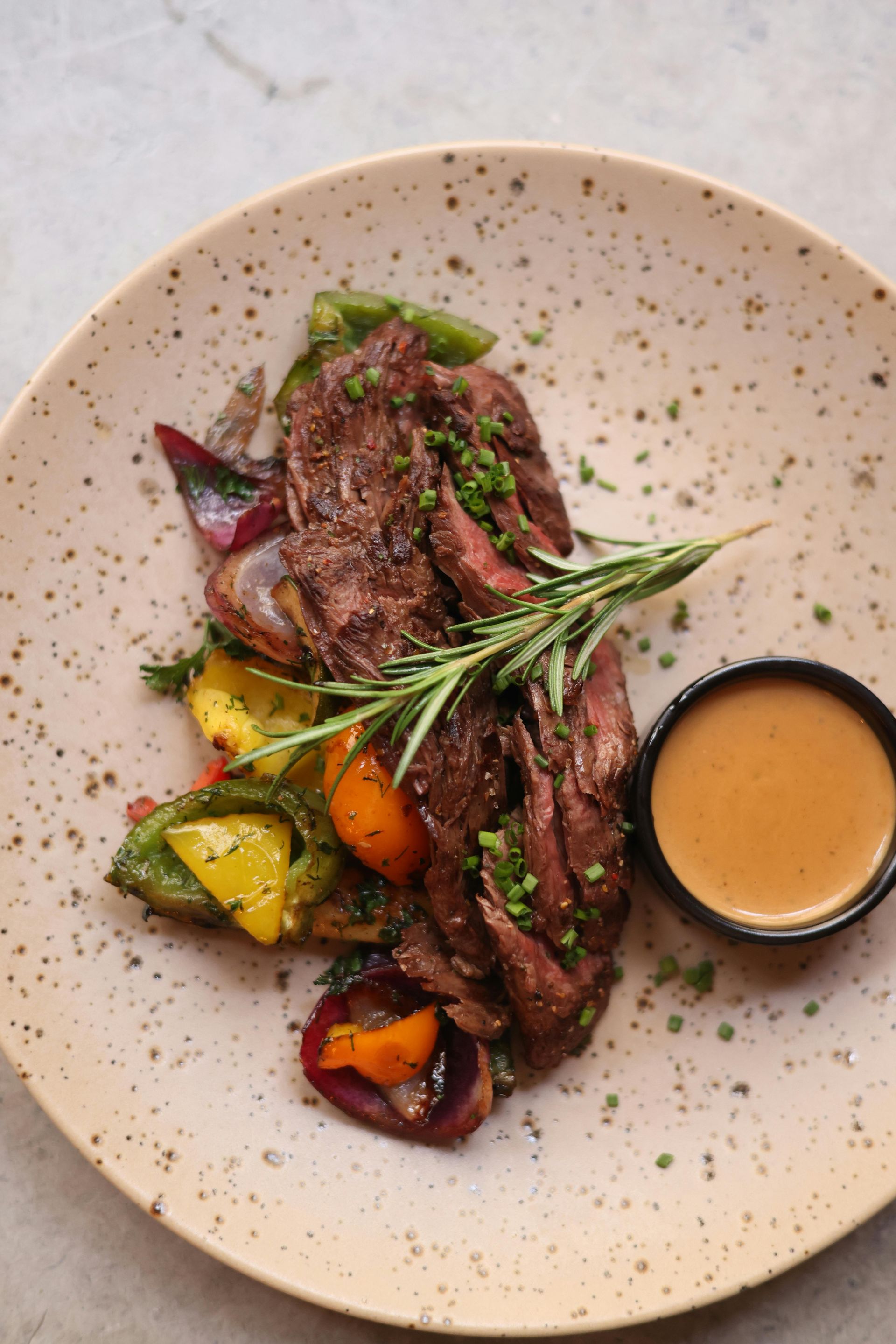
Just because the weather outside is frightful doesn’t mean you have to give up on your green thumb. Many herbs do well indoors as long as they are given enough light. A bright kitchen window or sunny southern exposure will work just fine. Keep them lightly watered and trim often for vigorous growth. Rosemary Nothing says Christmas like that woodsy, piney, Christmas tree scent, and the herb Rosemary is an excellent substitute! From trailing forms to upright shrubs that can actually be pruned into a cone, like a fir or spruce, Rosemary has the look and smell we so love! Perfectly hardy and happy outdoors, it is still nice to bring one in for the holidays! Thyme Thyme is a low-growing savory herb from the Mediterranean, and they can benefit from being grown in a container indoors, especially during our wet winters. For an extra dash of class, try silver thyme, or gold-variegated lemon thyme, which is savory but also sweet and fruity! Sage Sage is a classic kitchen herb, but it goes dormant if left out in winter. Those who desire sage for winter cooking will probably have to grow it indoors. Variegated forms offer beautiful colors on their leaves, with the same wonderful flavor. Parsley Parsley is a culinary favorite for all seasons, and it can be grown outdoors, or indoors in a sunny window in winter. Most food dishes are prepared with Italian flat parsley, but growing curly parsley can impart the same flavors while giving extra pizzazz, both on the windowsill and as a garnish for your favorite dishes. When applying fresh herbs to your recipes a good rule of thumb is 3/1. If your recipe calls for 1 tsp of dried thyme use 3 tsp of fresh.

It's time to select your Christmas tree! Here, we have your tree BY NAME! How about having "The Hulk" or "Minnie Mouse" in your living room? Always make sure your tree receives a fresh cut before taking it home. We do this for you! When selecting, cup your hand at the base of a branch and run up down the length of the branch. If the needles have a healthy green color, are soft and hold fast, the tree is fresh. Christmas trees need a stand. Make sure it is large enough to hold at least one gallon of water. Replenish the water as needed, never letting the water level drop below the bottom of the trunk. Add tree preservative to the water to help keep it fresh longer. DECEMBER TO DO LIST: -Plant cool-season annuals & vegetables -Lower lawn mower blades for cool-season lawns -Stop feeding St. Augustine lawns -Place a bird feeder in the garden since natural food sources may not be available as much for birds -Freshen up container gardens -Divide and replant all clumping perennials -Plant all kinds of hardy plants {trees, shrubs, perennials & vines} -Reduce water on deciduous fruit trees -As bulb foliage yellows and goes dormant, separate and replant for next season's bloom -Pansies and other cool-season annuals benefit from using blood meal when planted in order to keep the older foliage healthy. - Apply Turf & Ornamental Weed & Grass Stopper by Hi-Yield containing Dimension in flower beds to prevent cool weather weeds from growing. Try to apply right before a rainfall or deeply water in. -Apply fresh bed dressing (mulch, straw, etc.) to flowerbeds to help prevent winter weeds and to insulate the roots of landscape plants -Water landscape plants every 7-10 days or as needed - Do NOT prune landscape plants back yet, wait until mid-January to early February. Pruning back now may promote new growth. Tender vegetation is much more susceptible to cold damage, which may occur if we have a strong cold front in January. Also, remember not to prune azaleas until after they bloom in the spring.